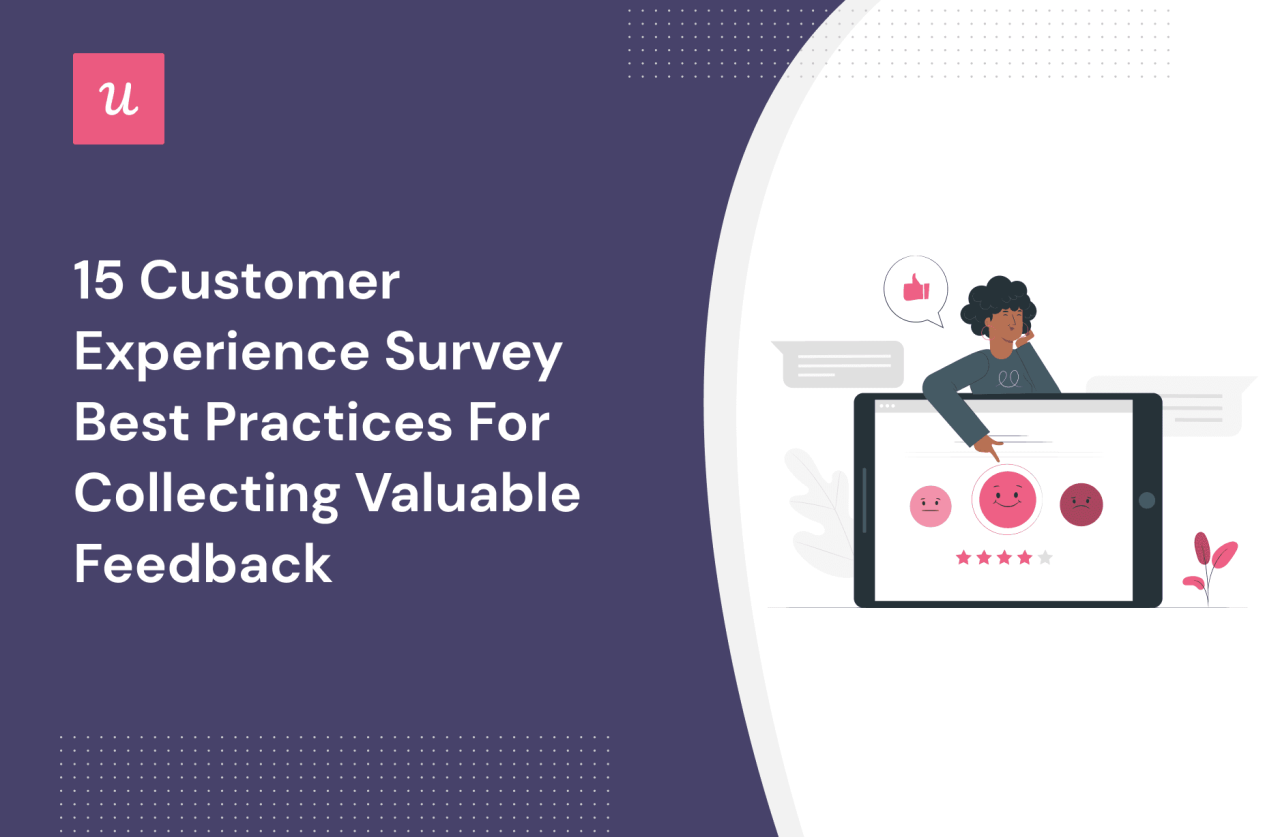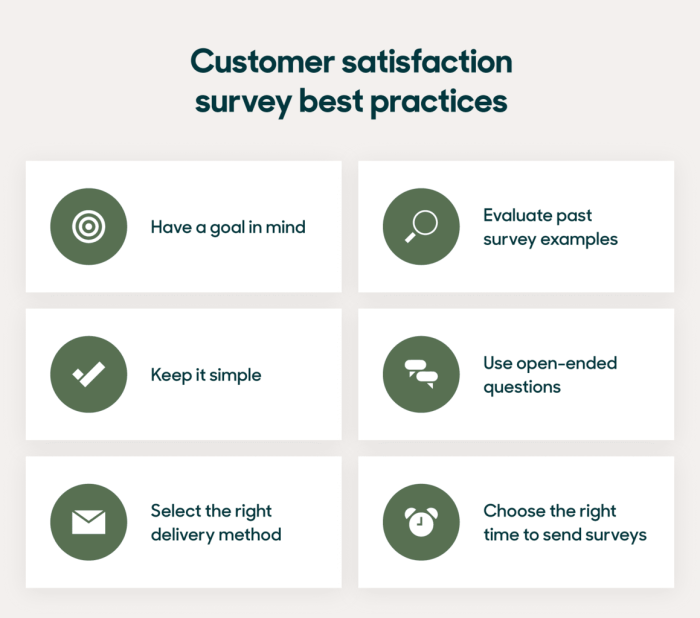Best Practices for Customer Surveys dives into the art of gathering feedback effectively, enhancing customer satisfaction, and boosting product and service quality.
Explore the key elements of creating impactful surveys and maximizing response rates to unlock valuable insights.
Importance of Customer Surveys
Customer surveys play a crucial role in any business as they provide valuable insights into the customer experience. By gathering feedback directly from customers, companies can make informed decisions to improve their products and services.
Understanding Customer Satisfaction Levels
Customer surveys help in understanding the level of satisfaction customers have with a company’s offerings. By analyzing responses, businesses can identify areas of improvement and address any issues that may be affecting customer satisfaction.
Improving Products and Services
Customer surveys are essential for product development and service enhancements. Feedback obtained from surveys can be used to make necessary changes, introduce new features, or modify existing processes to better meet customer needs and expectations.
Customer Retention
Customer surveys can also aid in customer retention efforts. By listening to customer feedback and taking action based on their suggestions, businesses can build loyalty and trust among their customer base. This, in turn, can lead to repeat business and long-term relationships with customers.
Designing Effective Surveys

When it comes to creating customer surveys, the design plays a crucial role in gathering valuable insights. Here are some tips to help you design surveys that are clear, concise, and effective.
Creating Clear and Concise Survey Questions
- Avoid using jargon or technical language that may confuse respondents.
- Keep questions simple and to the point to ensure easy comprehension.
- Use specific and precise language to avoid ambiguity in responses.
Importance of Using a Mix of Open-ended and Close-ended Questions
- Open-ended questions allow customers to provide detailed feedback and insights that may not be captured with close-ended questions.
- Close-ended questions provide structured data that is easy to analyze and quantify.
- Combining both types of questions provides a comprehensive view of customer opinions and experiences.
Structuring Surveys to Gather Actionable Insights
- Start with general questions before diving into more specific topics to ease respondents into the survey.
- Use logical flow and sequencing to guide respondents through the survey smoothly.
- Include a mix of qualitative and quantitative questions to gather both subjective and objective data.
Best Practices for Survey Layout and Design
- Use a clean and visually appealing layout to enhance the survey experience for respondents.
- Break down the survey into sections with clear headings to improve navigation.
- Avoid clutter and excessive use of colors or graphics that may distract from the survey content.
Increasing Survey Response Rates

To get more customers involved in your surveys, it’s essential to implement strategies that make participation appealing and convenient. By understanding the optimal timing for sending out surveys and incentivizing respondents, you can significantly boost your response rates.
Optimal Timing for Sending Surveys
Sending out surveys at the right time can make a huge difference in response rates. Avoid peak business hours or weekends when customers are likely to be busy. Instead, aim for weekdays during non-peak hours, such as late morning or early afternoon. This way, customers are more likely to have the time and inclination to provide feedback.
Incentivizing Customers, Best Practices for Customer Surveys
Offering incentives to customers can be a powerful way to increase survey responses. Consider providing discounts, coupons, or even small gifts as a token of appreciation for completing the survey. People are more likely to participate if they feel they are getting something in return for their time and effort.
Keeping Surveys Short and Engaging
Long, tedious surveys are a surefire way to discourage participation. Keep your surveys short and to the point, focusing on the most relevant questions. Use engaging visuals, interactive elements, and clear instructions to make the survey experience more enjoyable for customers. Remember, the easier and more enjoyable the survey is, the more likely customers are to complete it.
Analyzing Survey Data: Best Practices For Customer Surveys
When it comes to analyzing survey data, it’s crucial to dive deep into the numbers and feedback to extract valuable insights that can drive decision-making. By employing the right methods and tools, businesses can better understand their customers’ needs and preferences, ultimately enhancing the overall customer experience.
Methods for Analyzing Survey Data
- Utilize statistical analysis techniques to identify correlations and trends in the data.
- Create data visualizations like charts and graphs to present findings in a clear and concise manner.
- Employ text analysis tools to categorize and analyze open-ended responses for common themes.
Identifying Trends and Patterns
- Look for recurring themes or s in customer feedback to identify common pain points or areas of satisfaction.
- Track changes in feedback over time to gauge the effectiveness of implemented changes or strategies.
- Compare survey data across different customer segments to uncover specific trends based on demographics or behavior.
Segmenting Survey Data
- Break down survey data into segments based on customer demographics, purchase history, or interaction with the brand.
- Analyze feedback from each segment separately to gain deeper insights into the unique needs and preferences of different customer groups.
- Use segmentation to tailor marketing strategies and product offerings to specific customer segments for more personalized experiences.
Tools for Survey Data Analysis
- SurveyMonkey: A popular survey tool that offers robust data analysis features and customizable reporting options.
- Google Analytics: Provides in-depth insights into customer behavior on websites and can be integrated with survey data for a comprehensive view.
- Tableau: A powerful data visualization tool that can help businesses uncover patterns and trends in survey data through interactive dashboards.